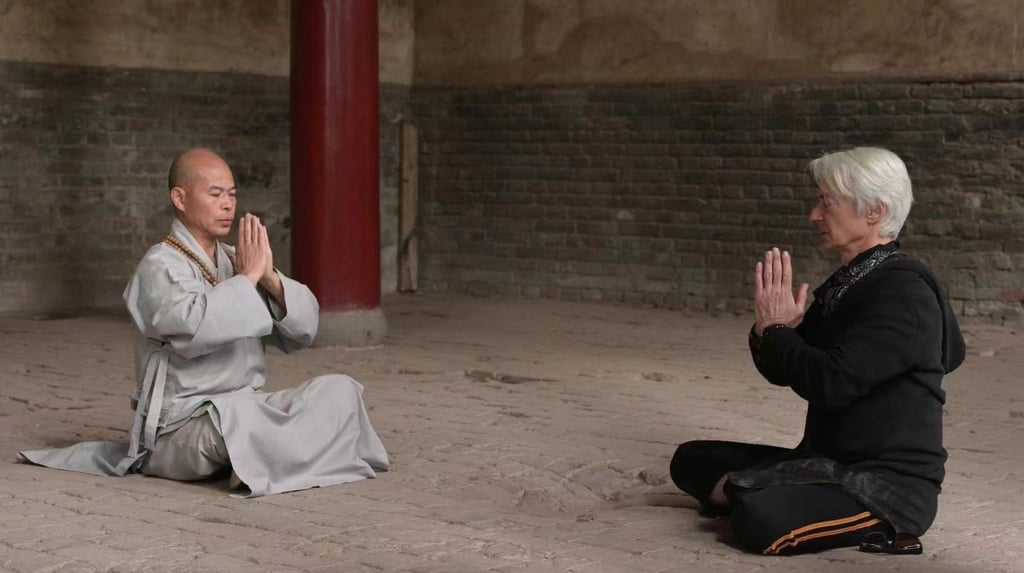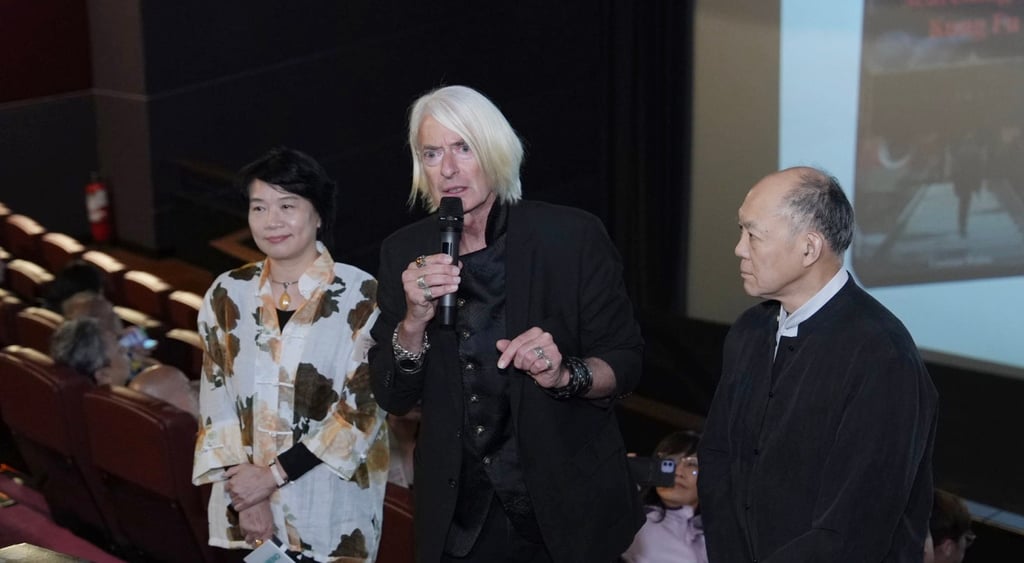American kung fu expert teaches Chinese martial arts philosophy in new book and film

From ancient Shaolin techniques to iconic movie stars like Bruce Lee, delve into the history, philosophy and cinematic impact of kung fu with our martial arts series.
With more than 40 years of experience in techniques including Shaolin kung fu, wing chun and jeet kune do, Laurence Brahm has dedicated much of his life to the research and practice of Chinese martial arts.
The New York-born, Beijing-based 63-year-old, who is fluent in Mandarin, recently published a book, in both English and Chinese, to promote the philosophical principles of Chinese martial arts – also known as wushu or kung fu – to the world.
“My experience with different martial arts has really been a big part of my life,” he says.

Brahm has learned martial arts from some of China’s foremost masters. Photo: Laurence Brahm
In Gate of Nine Dragons – Searching for Kung Fu, which recently launched in Hong Kong alongside the premiere of a documentary film of the same title, Brahm presents his learnings from years of travelling to various corners of China to discover the essence of Chinese martial arts.
Brahm was 20 when he first set foot in China in 1981, where he studied Mandarin at Nankai University in Tianjin. While he quickly discovered an interest in wushu, he spent most of the 80s pursuing law, political science and Asian studies in universities in the United States and Hong Kong, where he lived and worked for an American law firm.
In the early 90s he moved back to mainland China, where he served as a lawyer, political economist and, later, a social enterprise entrepreneur.
In 2002, he left the commercial world and embarked on his Searching for Shangri-La documentary project, adding filmmaker to his résumé – all while remaining a faithful wushu practitioner.
Brahm summarises Gate of Nine Dragons as “taking the quintessential [to let readers] quickly understand the philosophical principles behind [kung fu] and understand how they apply to life”.
He adds that it contains a number of personal touches as he reflects on his own experience “going from learning karate to studying the Chinese martial arts” such as Shaolin kung fu and wing chun.

Brahm speaks to the audience ahead of the Hong Kong premiere of his new documentary film about his journey to discover the true essence of kung fu. Photo: Sino United Publishing
The primary philosophy of wushu is not to consider them as combat techniques but as “a process of self-cultivation and a code for living”, he says.
“That’s what martial arts originally were. It’s about the internal recognition of one’s own potentiality,” he explains.
Gate of Nine Dragons has nine parts, each represented by a Chinese character to depict a martial arts value. The nine characters are separated into three levels: tian (sky), di (earth) and ren (humanity).
At the bottom is earth, which encompasses “perseverance”, “loyalty” and “balance”, he explains.
“You need perseverance for martial arts, as well as anything in life; loyalty is the social value of being lenient; and the five elements [of wuxing, a Chinese philosophy] – metal, wood, water, fire and earth – need to interact to bring about the balance of chi,” he says.
“We are always seeking balance in everything, between play, work, family and how we live our life.”
We need to recognise that Chinese culture has embodied very powerful universal values that can be applied anywhere, in any nation
Lawrence Brahm
The humanity level, between sky and earth, encompasses “change”, “centring” and “harmony”.
Brahm says change is signified by the bagua, an eight-pronged chart used in feng shui that is based on the acceptance of “change in the body and mind”.
Centring is also known as “the middle way” in Buddhism, meaning staying on a neutral path by avoiding unhealthy extremes in life.
For harmony, he says, “we look to tai chi, as it harmonises the body with nature and the universe. We don’t want to go against these things. Instead of thinking ballistic, we think with a yin and yang approach.”
The sky level encompasses “flow”, “emptiness” and “wu”.
Flow is the act of breaking down barriers. “In Taoism, flow is wuwei – [which means] not to go against, but to be like water. Sometimes letting go gives you a lot more control.”
Emptiness refers to the “meditation of movement in martial arts”, a way of focusing the mind while performing repetitive motions.
Lastly, wu is the art of non-violence, both physical and emotional.

Brahm (centre) poses with guests at the launch of his new book. Photo: Sino United Publishing
Brahm says that while China’s economic achievements are now well recognised in the West, its values do not receive the same respect or understanding.
“We need to recognise that Chinese culture has embodied very powerful universal values that can be applied anywhere, in any nation.”
Gate of Nine Dragons, he explains, is not just a guide to kung fu, but a code for living.
“Those values of perseverance, loyalty, balance, change, middle way, harmony, flow, emptiness and non-violence are universal values.”
0 Comments
LEAVE A REPLY